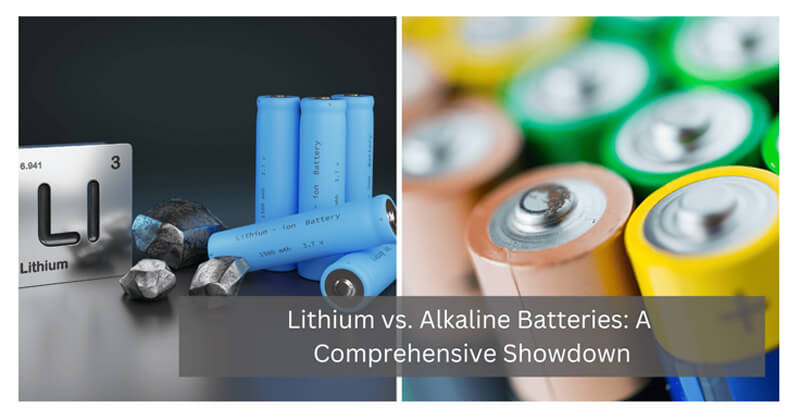Content
1. Composition and Basic Properties
2. Performance and Efficiency
3. Applications
4. Environmental Impact
5. Graphical Representation of Usage Trends
6. FAQs:
In the world of portable power, batteries are indispensable, powering everything from remote controls to critical medical devices. Among the various types of batteries, lithium and alkaline batteries stand out due to their widespread use and distinct characteristics. This article delves into the differences between lithium and alkaline batteries, examining their composition, performance, applications, and environmental impact.

Alkaline Batteries: Alkaline batteries are named for their alkaline electrolyte of potassium hydroxide. They are primarily composed of zinc (anode) and manganese dioxide (cathode). Standard alkaline batteries are known for their safety and reliability in low-drain applications.
Lithium Batteries: Lithium batteries, on the other hand, feature lithium metal or lithium compounds as the anode. These batteries use various materials for the cathode, including lithium iron phosphate and lithium manganese oxide, with an organic solvent as the electrolyte. They are known for their high energy density and long life.
The performance of lithium and alkaline batteries varies significantly across different metrics:
- Voltage: Lithium batteries generally offer a higher voltage per cell (typically 3.7 volts for lithium-ion) compared to alkaline batteries (about 1.5 volts).
- Capacity: Lithium batteries provide a much higher capacity, which makes them suitable for high-drain devices such as smartphones and laptops.
- Longevity: Lithium batteries also have a lower self-discharge rate, meaning they retain their charge longer when not in use compared to alkaline batteries.
Here is a table summarizing the key performance differences:
| Feature |
Alkaline Batteries |
Lithium Batteries |
| Voltage per Cell |
1.5 volts |
3.7 volts (Li-ion) |
| Average Capacity |
Lower (mAh) |
Higher (mAh) |
| Self-Discharge |
Higher |
Lower |
| Recommended Use |
Low-drain devices |
High-drain applications |
Alkaline batteries are typically used in low-drain devices such as TV remotes, clocks, and smoke detectors due to their cost efficiency and adequate performance in these applications. In contrast, lithium batteries are favored in high-drain and high-tech devices such as laptops, smartphones, and electric vehicles, where high energy density and longer battery life are critical.
The environmental impact of both battery types is significant:
- Disposability: Alkaline batteries are often disposed of in regular trash, which leads to heavy metals potentially entering the environment. Lithium batteries, however, require special handling and recycling processes due to their reactive components.
- Recyclability: Lithium batteries are more recyclable than alkaline batteries. Advances in technology have made it possible to reclaim more materials from lithium batteries effectively.
Lithium vs. alkaline batteries over the past decade. The data shows lithium batteries gaining a significant market share due to the rise of mobile technology and electric vehicles.
FAQs:






